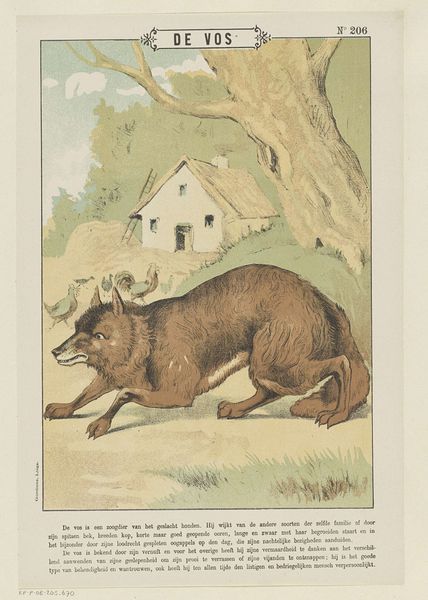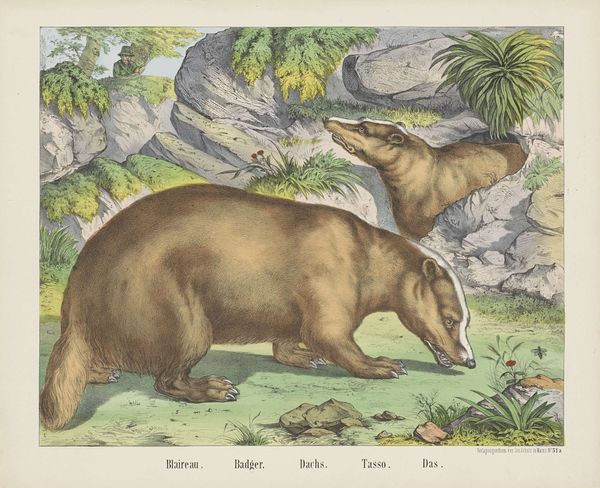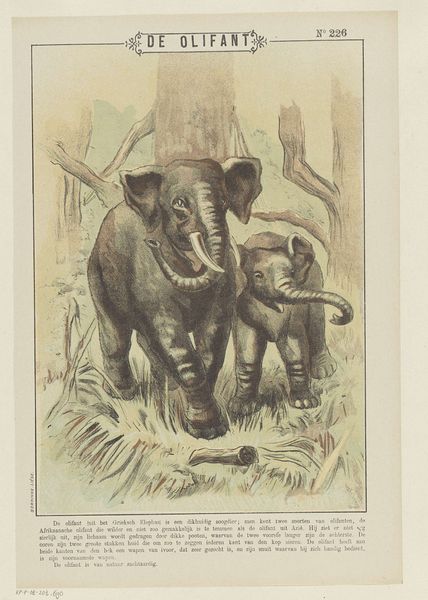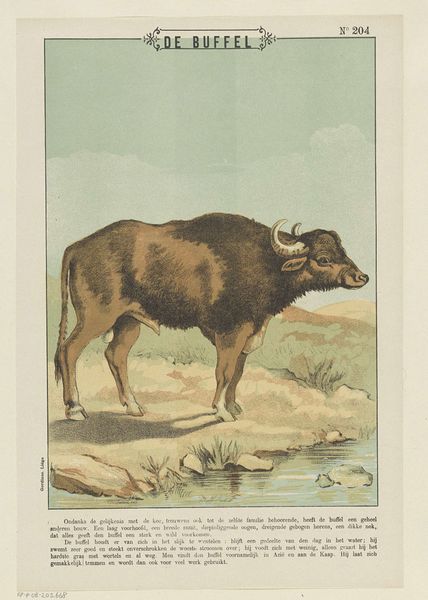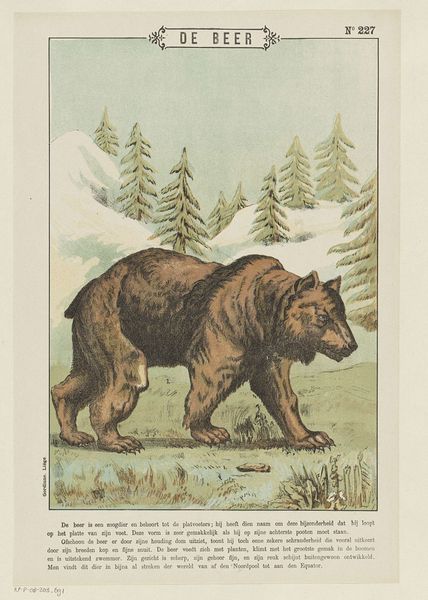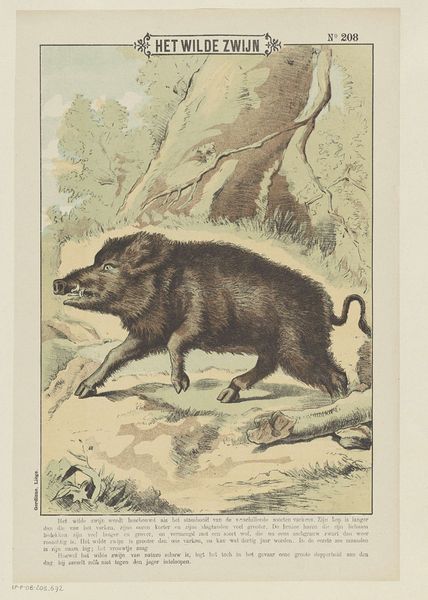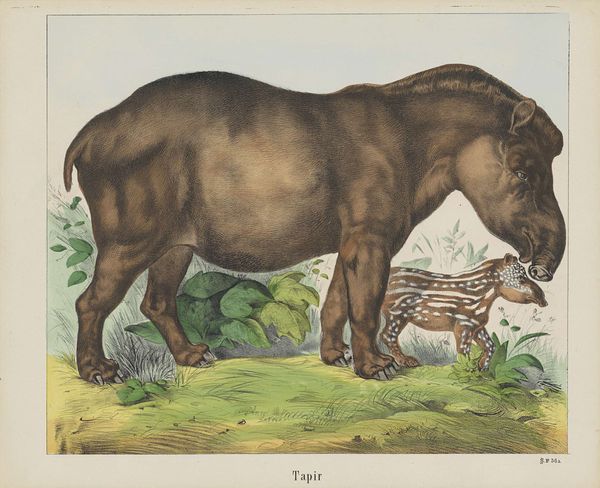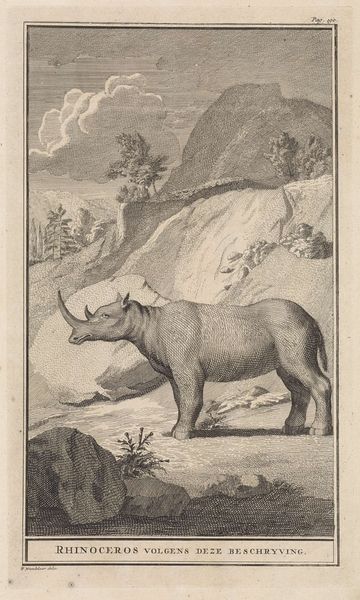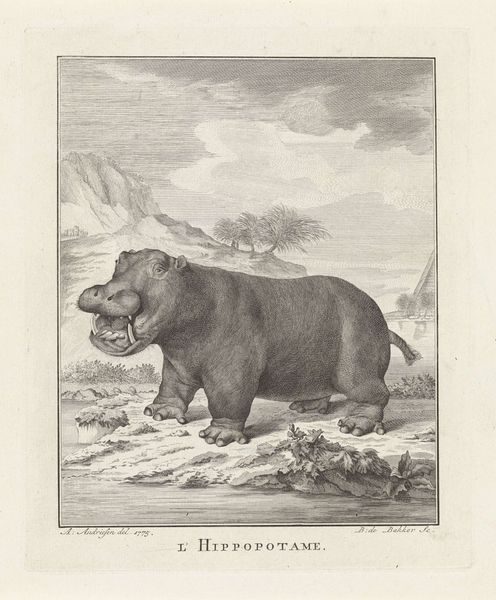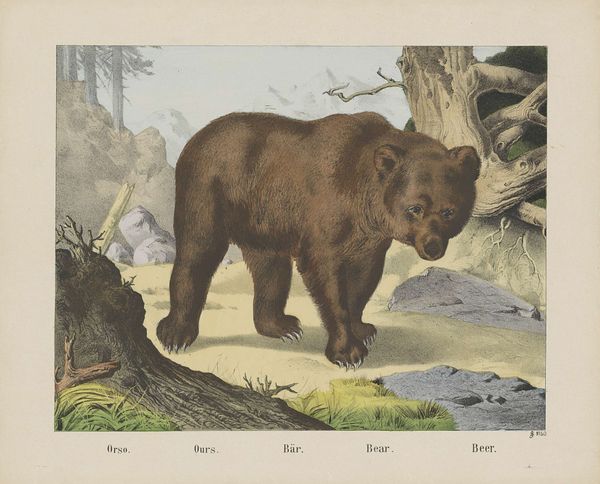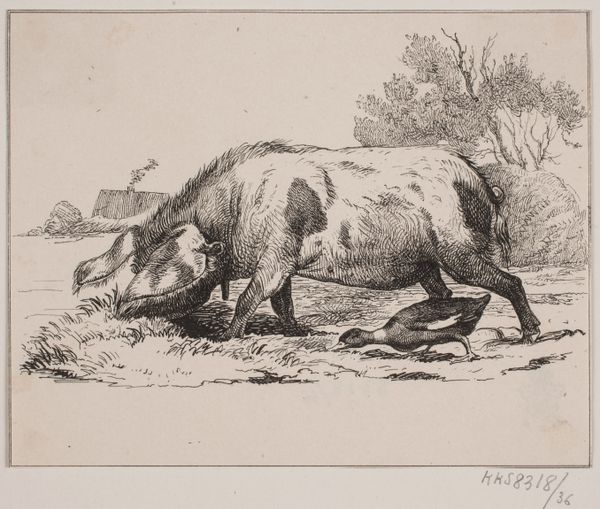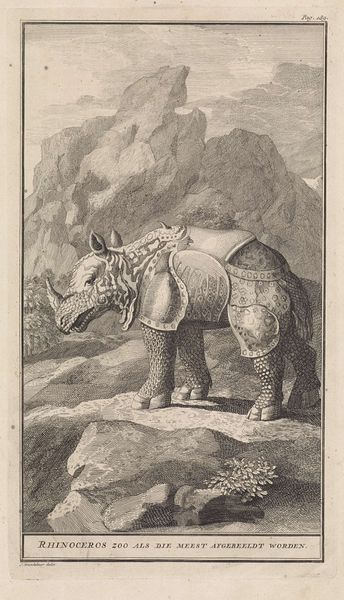
#
animal
# print
#
landscape
#
realism
Dimensions: height 398 mm, width 270 mm
Copyright: Rijks Museum: Open Domain
Editor: Here we have "De Neushoorn," or "The Rhinoceros," a print from 1894-1959 currently housed in the Rijksmuseum. What strikes me most is how the depiction of this rhinoceros seems almost staged, set against what looks like an illustration of an African landscape, complete with human figures. What do you make of that scene? Curator: What I find interesting is how this image fits within a larger context of colonial representation. It's not just a rendering of a rhinoceros, is it? It’s about the dynamic between humanity and the natural world, particularly through a lens of exploration and domination, seen from a Western point of view. The men with spears in the background—what kind of power dynamic does that evoke for you? Editor: It definitely feels like a snapshot from an "us versus them" narrative, suggesting human control over wildlife, or even an active conflict. So it's not merely an animal portrait, but a constructed scenario meant to reinforce certain perceptions. Curator: Exactly. The image would have circulated in a specific cultural context, shaping public perceptions about these animals and their environments. Think about where it was displayed. Who was the intended audience and how did they probably interpret it? The composition, the scene…all work to construct meaning. Editor: It’s incredible how much historical weight an image like this can carry. Initially, I only saw the rhinoceros, but now I recognize the underlying commentary about power, exploration, and representation. Thanks, that was a very insightful discussion. Curator: Indeed. It shows how something that might appear simple can reveal intricate narratives about our relationship with the world around us.
Comments
No comments
Be the first to comment and join the conversation on the ultimate creative platform.

